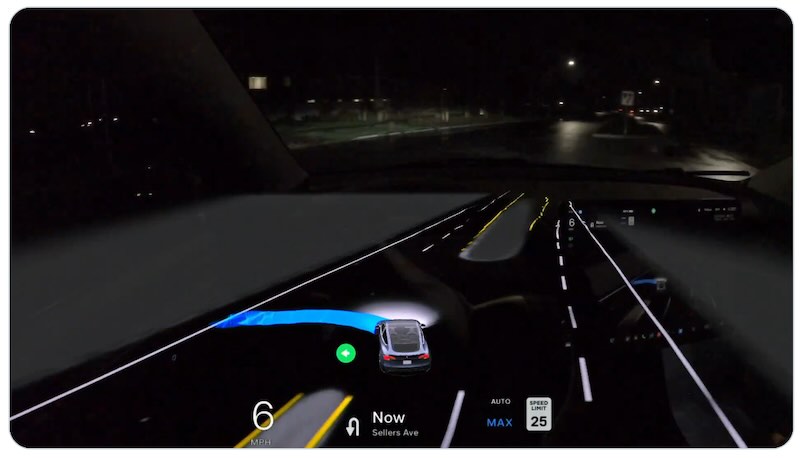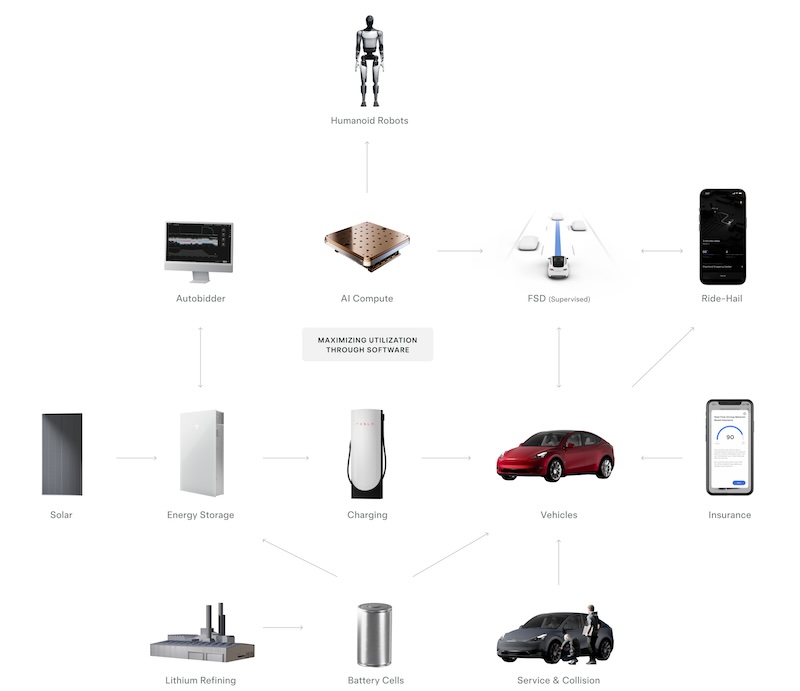You know that strange, uneasy feeling when you have to take over driving from a car’s advanced driver assist system? Like Autopilot has been confidently cruising down the highway, but now you’re approaching a complex interchange, and it’s time for you to manually navigate the tangle of exits and merges. That sense of “oh crap, I’m not sure I can do this as smoothly as the computer!” It’s a peculiar anxiety created by our growing reliance on automated systems that can often outperform humans.
Well, with Tesla’s latest Full Self-Driving (FSD) software update, Elon: major v12.4 and v12.5 upgrades, drivers are reporting the opposite sensation. After experiencing FSD’s refined capabilities, they start to feel strangely unsafe when driving unassisted. You get so accustomed to the reliability and capability of FSD, especially in hairy situations like busy intersections packed with pedestrians and cyclists, that you realize the computer really is more alert and decisive than you are behind the wheel.

Tesla’s FSD may be an automotive application, but it represents a broader breakthrough that foreshadows the robotics revolution extending into every sector of life and industry. As Elon Musk has reiterated, driving is truly a massively complex task that requires rapidfire decision making in a hostile environment where mistakes can be catastrophic. If industrial-grade robotics and AI can master that challenge, it can master anything.
We’re not talking about the rudimentary robotics of yore, simplistically programmed to perform rote tasks like manufacturing cars or stacking boxes. No, this is intelligent, self-teaching, exponentially evolving robotics capable of more complex feats of cognitive and physical dexterity than humans. FSD is at the vanguard, showing that robots can be smarter than us at jobs we once assumed only biological intelligence could handle. And mass-market autonomous cars are just the start.
Robotics Will Rewrite the Rules of Business and Economics
Think about it – if intelligent robots can reliably perform any physical task more efficiently and safely than people, human labor is no longer the bottleneck for productivity. In fact, a glut of human workers becomes a liability rather than an asset for companies. Those who can deploy the most highly capable robotic workforces, manufacturing more with less overhead, will enjoy an insurmountable competitive edge.
That’s already playing out in cutting-edge manufacturing and logistics operations relying on advanced robotics and automation. But the repercussions will ripple through every sector and fundamentally reshape the bedrock principles of labor economics, employment, and consumption itself. If we remove the need for human labor to produce goods and services, who will be able to afford to purchase them? The dividing line will be between those who can create value by managing robotic workforces and those who cannot, with little room in between.

Tesla Optimus Robots dexterity in handling real-world tasks via running entirely end-to-end, Optimus Engineering Director Milan Kovac, shows the robot seamlessly picking up individual 4680 battery cells from a conveyor belt and meticulously placing them in trays using its gripping hands. While the motions appear somewhat sluggish, Milan Kovac highlighted Optimus’s increasing reliability in executing the choreography from start to finish.
It’s a dizzying thought experiment, but one we need to start seriously considering as robotic capabilities skyrocket thanks to breakthroughs like FSD. The rules of human-centered industrial economies are swiftly being rewritten by ever-more intelligent and capable machines. Those who stay ahead of that curve – companies, investors, policymakers – will define the next era of material production and begin to shape its societal ramifications. Like it or not, the robots are taking the wheel, and their capabilities are only going to become more unnerving from the passenger seat.
